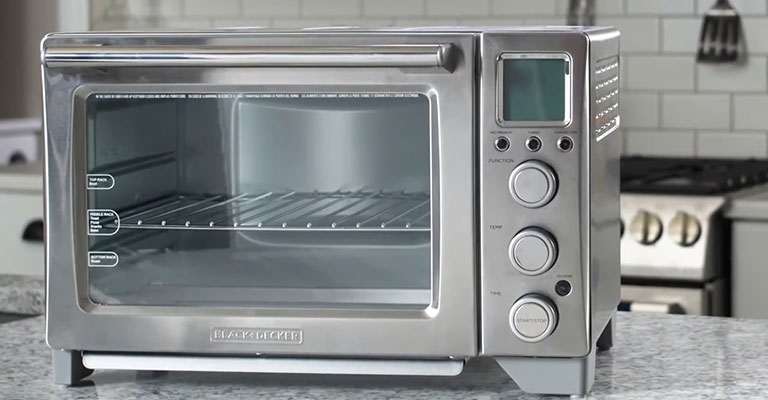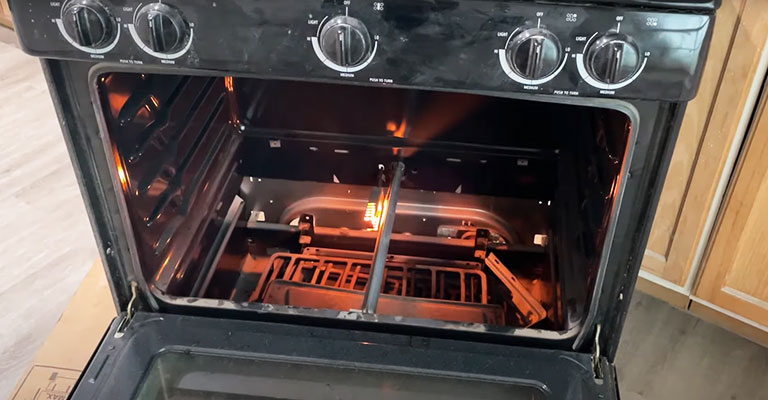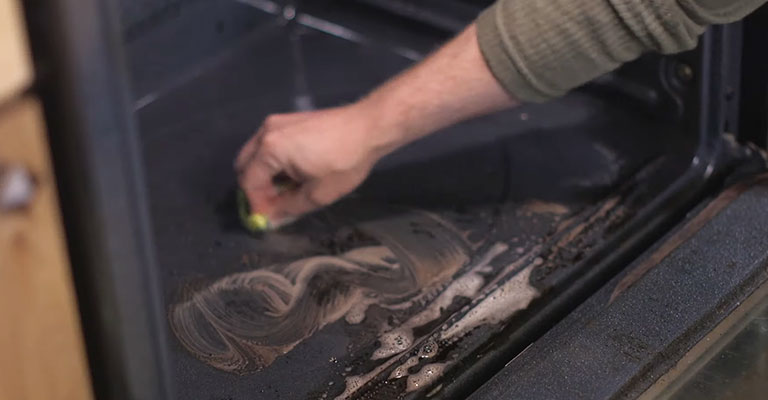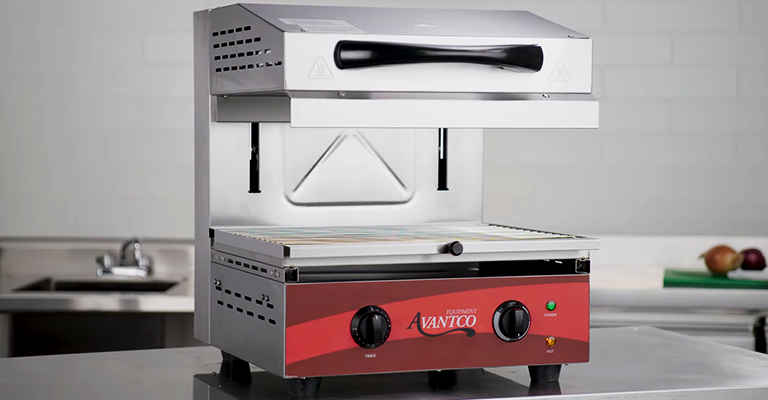Why Does My Oven Take So Long to Preheat?-Possible Causes And Fixes
The anticipation of a delicious home-cooked meal can quickly wane when faced with the frustratingly long wait for an oven to reach its desired temperature. Why does this common kitchen appliance seem to take an eternity to preheat?
The answer lies in a combination of internal and external factors, each contributing to the time it takes for your oven to be ready for cooking. Understanding these elements can not only save you time in the kitchen but also ensure more efficient energy usage.
In this exploration, we will delve into the key reasons behind the extended preheating times and offer practical solutions to expedite the process

Why Does My Oven Take So Long to Preheat?
Preheating your oven is a crucial step in many cooking processes, but it can be frustrating when it seems to take forever to reach the desired temperature. Several factors can contribute to a lengthy preheating time.
In this article, we will explore the reasons why your oven may take longer than expected to preheat.
Oven Type and Model
The type and model of your oven play a significant role in preheating times. Conventional ovens, for instance, usually heat up faster than older models or microwave-convection combinations.
The size and insulation of the oven can also affect how quickly it reaches the desired temperature.
Calibration and Accuracy
Ovens come with built-in thermostats to control temperature, but over time, these can become inaccurate.
When your oven’s thermostat is off by even a few degrees, it might take longer to preheat because it’s trying to reach a temperature that’s not correctly calibrated. Regular maintenance or calibration checks can help address this issue.
Insufficient Power Supply
Your oven relies on a stable and adequate power supply. If the electrical connection to your oven is not providing the necessary voltage, it will struggle to heat up quickly.
Ensure that the power source is in good condition and that the wiring is not damaged.
Dirty or Clogged Elements
Ovens have heating elements at the top and bottom that generate heat. These elements can accumulate residue from cooking over time, which can reduce their efficiency.
Dirty or clogged elements will require more time to reach the desired temperature, and in some cases, they may not reach it at all. Regular cleaning and maintenance can prevent this problem.
Poor Insulation
The insulation in your oven is responsible for retaining heat and preventing it from escaping.
When the insulation is damaged or worn out, your oven will lose heat faster, requiring it to run longer to preheat. Check for signs of damage to the oven’s insulation and replace it if necessary.
Altitude and Climate
Your location can also impact preheating times. If you live at a high altitude, the lower air pressure can affect the oven’s heating time. Similarly, extreme cold or hot weather conditions can influence how quickly your oven reaches the desired temperature.
There’s not much you can do to change these factors, but being aware of them can help you adjust your cooking times accordingly.
Oven Load
The number and type of dishes in your oven can affect preheating time. If you’re preheating with multiple dishes or with a lot of food inside, it will naturally take longer to heat everything.
To reduce preheating time, try to stagger your cooking times or use separate ovens if available.
Faulty Heating Element
The heating element is the component responsible for generating heat inside the oven. If it is damaged, worn out, or malfunctioning, it will struggle to reach and maintain the desired temperature.
A faulty heating element may need to be replaced by a professional technician.
Poorly Sealed Door
A properly sealed oven door is crucial for efficient heating. If the door’s seal is damaged or worn, heat can escape, leading to longer preheating times.
Inspect the door gasket for any signs of wear and tear, and replace it if necessary to improve oven performance.
Inadequate Ventilation
Ovens require proper ventilation to operate efficiently. If the ventilation system is blocked or obstructed, it can impede the flow of heat and extend the preheating time.
Ensure that the vents, both inside and outside the oven, are clear of any debris or obstructions.
Common Oven Preheating Issues and Solutions

Everyday appliances play a crucial role in our lives, making tasks easier and more efficient. However, like any mechanical or electronic device, they can encounter issues from time to time.
In this article, we’ll explore some common problems with household appliances and offer practical solutions to address them.
Refrigerator Not Cooling Adequately
- Issue: One of the most common issues with refrigerators is insufficient cooling. This can lead to spoiled food and inefficient appliances.
- Solution: Check for blocked vents, ensure the thermostat settings are correct, clean the condenser coils, and make sure the door seal is intact.
Washing Machine Leaking
- Issue: A leaking washing machine can cause water damage to the surrounding area and potentially lead to electrical problems.
- Solution: Examine hoses and connections for wear or damage. Tighten or replace any loose or damaged parts. Also, ensure the machine is level to prevent excess movement during cycles.
Oven Uneven Cooking
- Issue: Uneven cooking in the oven can result in some portions of your dish being undercooked or overcooked.
- Solution: Check for signs of heating element damage. If they’re intact, use an oven thermometer to verify the accuracy of the temperature settings. Consider rotating dishes during cooking for more even results.
Dishwasher Not Cleaning Properly
- Issue: When your dishes are coming out of the dishwasher still dirty, there might be an issue with the spray arms or filters.
- Solution: Clean the spray arms and check for any obstructions in the filters. Run an empty cycle with a dishwasher cleaner to remove mineral buildup.
Microwave Not Heating
- Issue: A microwave that’s not heating food could be due to a malfunctioning magnetron, which generates microwave energy.
- Solution: Unfortunately, this is a complex component to replace and should be handled by a qualified technician. It might be more cost-effective to replace the microwave altogether.
Dryer Not Drying Clothes:
- Issue: If your dryer isn’t effectively drying clothes, it might be due to a clogged lint filter or exhaust vent.
- Solution: Clean the lint filter after every use and regularly inspect the exhaust vent for blockages. If the issue persists.
Clogged Garbage Disposal
- Issue: A clogged garbage disposal can lead to slow draining and unpleasant odors in your kitchen sink.
- Solution: First, turn off the disposal and try to remove any visible debris using tongs or pliers. Then, run a combination of ice cubes and coarse salt through the disposal to help clean the blades.
HVAC System Not Cooling or Heating Properly
- Issue: Inefficient heating, ventilation, and air conditioning (HVAC) systems can result in discomfort and high energy bills.
- Solution: Start by checking and replacing air filters regularly. Clean any debris around outdoor condenser units.
Best Practices for Efficient Preheating
Efficient preheating of your oven is crucial for consistent and timely cooking.
Consider these best practices to ensure your oven is preheated efficiently:
Know Your Oven
Familiarize yourself with the intricacies of your oven. Observe how it heats, whether it tends to run hot or cool, and if there are any specific quirks.
This knowledge will allow you to plan your cooking process more effectively and make necessary adjustments to recipes.
Preheat in Advance
Giving your oven a few extra minutes to preheat can make a significant difference.
This ensures that it reaches the desired temperature before you start cooking, reducing the overall cooking time and resulting in more consistent results.
Keep It Clean
Regular cleaning of your oven is not just about aesthetics—it’s about efficiency.
Food residues and grease can act as insulators, preventing the oven from reaching the desired temperature quickly. A clean oven allows for better heat distribution, ensuring that your dishes cook evenly.
Use an Oven Thermometer
While most ovens have built-in thermostats, they can sometimes be slightly off.
Using an oven thermometer provides an accurate reading of the internal temperature. This way, you can make any necessary adjustments to ensure precise cooking.
Avoid Overloading
It’s tempting to maximize oven space, especially when preparing large meals. However, overcrowding can disrupt the flow of hot air and hinder efficient preheating.
Consider using multiple ovens or staggering cooking times for dishes that require precise temperature control.
Use the Right Bakeware
The type of bakeware you use can significantly impact how efficiently your oven preheats.
Dark, non-reflective pans absorb and distribute heat more effectively than lighter, shinier ones.
Choosing the right bakeware ensures that your dishes receive consistent heat for optimal results.
Position Racks Correctly
For baking and roasting, placing the oven rack in the middle position is key. This allows hot air to circulate evenly around your dishes, promoting uniform cooking.
Avoid placing racks too close to the top or bottom, as this can lead to uneven results.
Keep the Oven Door Closed
Resist the temptation to frequently check on your food while the oven is preheating.
Every time you open the oven door, you allow heat to escape, causing the oven to work harder to regain the desired temperature. Keeping the door closed maintains a stable environment for efficient preheating.
Optimize Temperature Settings
In recipes that allow for some flexibility, consider preheating to a slightly lower temperature. You can then adjust the cooking time accordingly.
This not only saves time but also conserves energy without compromising the quality of your dishes.
Take Advantage of Residual Heat
Certain dishes, like casseroles or baked goods, can be placed in the oven as it’s preheating.
This utilizes the residual heat, reducing the overall preheating time required. It’s a clever way to save time without sacrificing cooking quality.
Insulate Your Oven
Inspect the oven door gasket for any signs of wear or damage. A well-sealed oven door prevents heat from escaping, aiding in quicker preheating. When you notice any issues, consider replacing the gasket to maintain efficiency.
Regular Maintenance
Scheduled checks and maintenance for your oven ensure that all components, including heating elements and thermostats, are in optimal working condition.
This proactive approach helps prevent potential issues that could lead to inefficient preheating.
Use a Timer
Setting a timer when you start preheating your oven serves as a helpful reminder.
This way, you won’t forget and risk over-preheating, which can waste energy. It also allows you to efficiently manage your cooking process.
Oven Maintenance and Care

Maintaining and caring for your oven is essential for ensuring its longevity, efficiency, and safety.
Here are some comprehensive tips for oven maintenance and care:
Regular Cleaning
Regularly clean the interior of your oven to prevent the buildup of food residues, grease, and spills. Use a non-abrasive cleaner and a soft cloth or sponge to wipe down the surfaces.
Clean the Door and Window
Pay special attention to the oven door and window. Use a glass cleaner to remove any stains or smudges for a clear view of your food as it cooks.
Clean Oven Racks
Remove the oven racks and soak them in warm, soapy water. Use a scrub brush or sponge to remove any baked-on residue, then rinse and dry thoroughly before reinserting them.
Check the Door Seal
Inspect the door gasket or seal for any signs of wear or damage. A damaged seal can allow heat to escape, leading to inefficient cooking and longer preheating times. If needed, replace the gasket.
Inspect Heating Elements
When your oven has visible heating elements, check for any signs of damage, such as cracks or breaks. When you notice any issues, it’s important to replace them promptly.
Monitor Thermostat Accuracy
Use an oven thermometer to check if the temperature settings are accurate. If you find discrepancies, it might be necessary to recalibrate the thermostat or seek professional assistance.
Clean the Ventilation System
Ensure that the oven’s ventilation system is clear of any debris or blockages. This helps maintain proper airflow and prevents overheating.
Avoid Using Harsh Cleaners
Avoid using abrasive cleaners, steel wool, or harsh chemicals on the oven’s interior. These can damage the surfaces and affect the oven’s performance.
Replace Burner Drip Pans
When your oven has electric burners, periodically check and replace the drip pans beneath them. Clean drip pans help prevent flare-ups and maintain even heat distribution.
Use Oven Liners and Mats
Consider using non-stick oven liners or mats to catch spills and drips. These can be easily removed and cleaned, preventing stubborn stains on the oven floor.
Regularly Inspect Gas Connections
When you have a gas oven, periodically inspect the gas line and connections for any signs of leaks.
When you detect a gas odor, turn off the supply and contact a professional technician immediately.
Schedule Professional Maintenance
Arrange for a professional technician to perform routine maintenance checks on your oven.
They can identify and address any potential issues before they become major problems.
Store Oven Mitts and Towels Safely
Avoid placing oven mitts, towels, or any flammable materials near the oven while it’s in use to prevent accidents and fires.
FAQs
Why does my oven take longer than usual to preheat?
Ovens can take longer to preheat due to factors like outdated or faulty heating elements, inaccurate thermostat calibration, or insulation issues.
Can a dirty oven affect preheating time?
Yes, a dirty oven with built-up food residues and grease can hinder heat distribution, leading to longer preheating times.
Does the oven’s age impact the preheating speed?
Yes, older ovens may have worn-out heating elements, outdated insulation, or less precise thermostats, all of which can contribute to longer preheating times.
Can altitude or weather affect oven preheating?
Yes, living at a high altitude or extreme weather conditions can impact how quickly an oven reaches the desired temperature.
How can I improve my oven’s preheating speed?
Regular maintenance, like cleaning, inspecting heating elements, and ensuring a well-sealed door, can improve preheating efficiency.
To Recap
The time it takes for your oven to preheat can be influenced by several factors. These include the condition and age of your oven, the accuracy of the thermostat, the state of the heating elements, insulation, and external factors like altitude and weather conditions.
To address preheating delays, regular maintenance, such as cleaning and inspecting heating elements, and ensuring a well-sealed oven door are essential.
Being aware of external factors and following best practices can significantly improve preheating efficiency, reducing waiting times and enhancing your overall cooking experience.
Efficient preheating not only saves time but also conserves energy and delivers more consistent cooking results.

